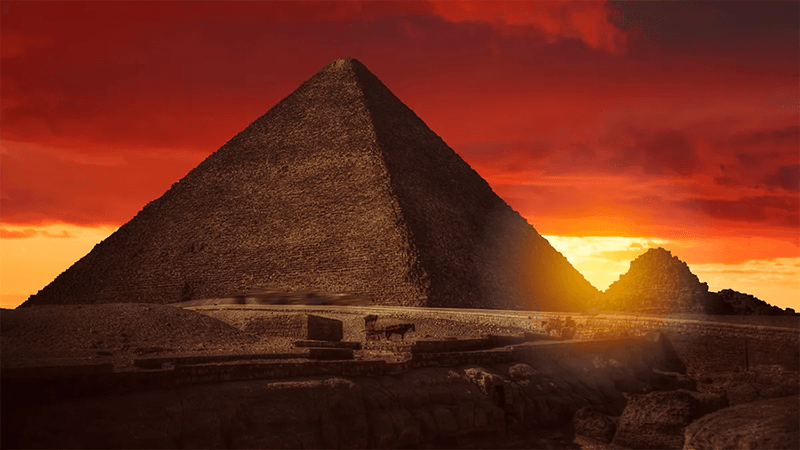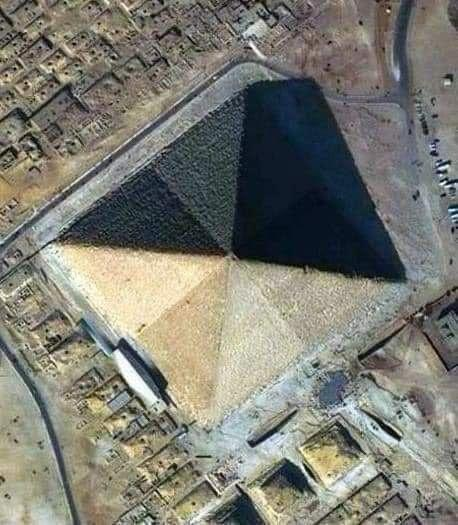If you guessed four, you were wrong. If you thought three or five, you seem a bit confused about geometry.
The Egyptian pyramids have been a mythical symbol that has fascinated mankind for thousands of years. But even today, there are still many things we don’t know about these magnificent structures. For example, the secrets of the giant space sealed inside the Great Pyramid of Giza for 4,500 years, or how the building materials were transported to the construction site, are still unsolved.
But let's start with a more basic question: How many sides does the Great Pyramid of Giza, the most iconic of the Egyptian pyramids, really have?

If you guessed four, you were wrong. If you thought three or five, you seem a bit geometrically confused. The exact number of sides of the Great Pyramid of Giza was not confirmed, at least by modern humans, until RAF pilot P. Groves took an aerial photograph in 1926. From this angle, it can be seen that the pyramid's sides are actually concave in the middle.
"The Great Pyramid of Giza has a surprising feature that its sides are slightly concave along the central line from base to top," Akio Kato, from the Department of Mathematics and Physics at Kanagawa University, Japan, explained in a 2023 research paper.
According to Mr. Kato, these concave sides make the Great Pyramid a concave octagonal pyramid, rather than a conventional square pyramid. This concavity is too subtle to be noticed from the ground but is easily observed from the air.

Kato also said that this unique design may have something to do with the pyramid's long-term stability against harsh natural challenges such as high gravity, earthquakes, and rainstorms. In his research paper, he wrote: "The inclined layers, together with the reinforced foundation, are necessary to maintain the long-term stability of the pyramid against harsh natural forces... These effects are significantly different between the cores of inclined layers and the cores of completely flat layers. While inclined layers can compact and become stronger over time, flat layers tend to collapse and weaken."
Design by intention or by chance?
The ancient Egyptians were certainly brilliant engineers – the pyramids still stand today as evidence. However, this does not mean they were infallible. Many of the Great Pyramid’s corridors and chambers were abandoned by their builders when they were found to be unstable, leaving scientists uncertain whether the concave design was a deliberate choice for stability or just a lucky coincidence.
Regardless, the sophistication of ancient Egyptian construction techniques remains a marvel, continuing to challenge human understanding and inspire modern research.
Source: https://giadinh.suckhoedoisong.vn/kim-tu-thap-giza-vi-dai-thuc-su-co-bao-nhieu-canh-neu-ban-nghi-la-bon-thi-ban-da-nham-172241202072439945.htm



































































































Comment (0)